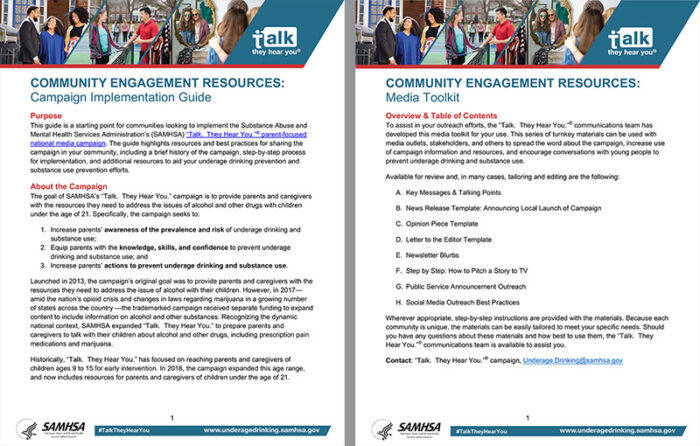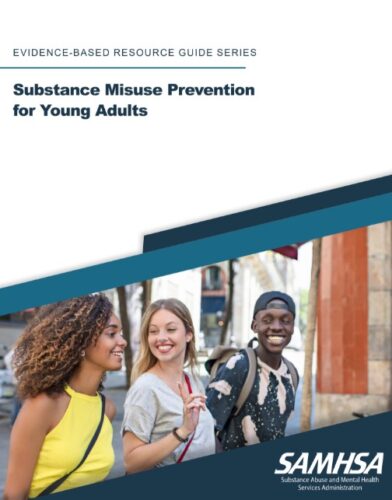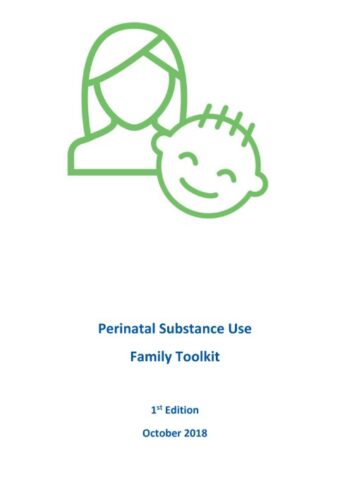Native Harm Reduction Toolkit
Basic harm reduction tips and tools that focuses on native harm reduction approaches.
This auto-generated text will be edited soon.
NATIVE HARM REDUCTION TOOLKIT
www.harmreduction.org
WELCOME TO NHRC'S NATIVE HARM REDUCTION TOOLKIT!
This toolkit was imagined and created by
Arlene Brown, member of the Bishop
Paiute Tribe, with support from NHRC
staff, including Jessica Smith. It has been
informed by Tribal and Urban Native
people from across California and brings
together resources from Indigenous harm
reduction leaders from across the country
and beyond.
TABLE OF CONTENTS
Traditional OpeningAcknowledgments
LandAcknowledgment
Background
Who
CreatedThis & Whois itFor?
Why
a Native HarmReductionToolkit?
What is Harm Reduction?
Core
Principles,Philosophy& Services
Indigenizing
& Decolonizing HarmReduction
The
BurdenofStigma
Stigma
Reduction
Bringing Harm Reduction to Your Community
Understanding
the Need
Assessing
CommunityReadiness
Engaging TribalLeaders & EldersClosingResources
TRADITIONAL OPENING
Chelsea Gallardo, Bishop Paiute Singer
Natives
for
Narcan
-Bakersfield
American
Indian
Health
Project
ACKNOWLEDGMENTS
WewanttoacknowledgeandthanktheindividualswhoparticipatedininterviewstohelpinformtheNativeHarmReductionandDismantlingStigmatrainings,bothofwhichareincludedinthistoolkit.Wealsowanttothanktheindividualswhosharedtheirvoicesandexperienceswithharmreduction,treatment,andrecoveryforthe“BringingHarmReductiontoYourCommunity”sectionofthistoolkit.
Additionally,thistoolkitwouldnotbepossiblewithoutfundingfromCIGNA.TheirsupporthasallowedustocollaboratewithNativeleadersinCaliforniainameaningfulwayandcultivatelastingrelationshipsthatwillcontinuetohelpsavelives.
Please use theinformation in theimage to the righttofind outwhose land youare on,and take amomentto respectfullyacknowledge theoriginalstewardsofthe land.If youwishtogo beyondacknowledgment,thereare opportunities—
suchaspaying avoluntaryland tax orhonortax— totangiblyrecognize andrespectthesovereigntyof NativeNations.
BACKGROUND
Who Created This?
A
collaboration between NHRC&Native HarmReduction ConsultantArlene Brown,memberof theBishop Paiute Tribe.
In
2020,NHRCconducted interviewswithCaliforniaNative service providers,people who use drugs,andpeople in recoveryto betterunderstand the harmreduction training and education needsof TribalandUrban Native communities.
Two
trainingswere created byArlene-Foundationsof Native Harm Reduction &Dismantling the Stigmaof Substance Use and Harm Reduction Among ourNative People.
Arlene
laterimagined thistoolkit,whichincorporates3 trainingsalong withotherresources.
Who is This For?
Native
communitiesinterested in starting orexpanding harm reduction services
Communities
thatare struggling to getbuy-in orsupportforharm reduction from leadersorelders
Native
and Non-native service providerswho wantto offermore culturally-appropriate harmreduction and treatmentservicesto Nativeparticipants
Tribal
Leadersand Elderswho wantto learn moreaboutimplementing harm reduction in theircommunitiesto help save lives
BACKGROUND
Why a Native Harm Reduction Toolkit?
National Harm Reduction Coalition recognizes the impact that colonialism, historical trauma, and the racist war on drugs have had on Indigenous communities in California and beyond. We aim to create resources and materials that are informed by the people and communities they are meant to support. This specific toolkit was created to empower California Native communities to imagine, create, and implement harm reduction services for themselves, recognizing the need for Indigenized and Decolonized approaches to public health interventions. This is a living toolkit that can and should be updated as Native communities continue to develop innovative and culturally responsive strategies to support their people.
Harm reduction utilizes a spectrum of strategies to WHAT IS HARM reduce the negative consequences associated with REDUCTION? drug use, sex work, and other behaviors.
Wantto learn more!?CLICK HEREto viewtheFoundations ofNative HarmReductiontraining
HARM REDUCTION IS:
Non-judgmentalRadicalcompassionMeeting people where theyare atRespectfulof bodilyautonomyFlexiblePerson-centeredPragmatic&RealisticAnti-oppressiveSupportive of anypositive changeEvidence-based
HARM REDUCTION IS NOT:
Rigid orstaticPunitiveStigmatizingIsolatingFear-basedAbstinence-focused (abstinenceisseen asone of manyoptionsaperson can choose fortheirhealthand well-being,justnotthe onlyoption)
Someharmreductionservicesincludeoverdoseprevention(naloxone,drugtesting,overdosepreventioneducation);providingsteriledruguseequipment,condoms,andsaferdruguse/safersexeducation;medicationforopioidusedisorder(MOUD)/medicationassistedtreatment(MAT);safeconsumptionsites;casemanagement;HIV&HepCtesting&treatment;referralstootherservices.
INDIGENIZING & DECOLONIZING
HARM REDUCTION
Before it was ever called harm reduction, Indigenous, Black and other people of color were figuring out the most effective and culturally responsive ways to keep their communities healthy and safe in the face of racism, colonialism, and historical trauma.
FirstNationcommunitiesinCanadahavedevelopedseveralframeworksfordecolonizingandindigenizingharmreduction
Decolonizing Harm Reduction:going
Indigenizing Harm Reduction:beyond strategies foraddressingcreating and supporting policies,substance use by interrogatingprograms,and practices thatarecolonialssystems & structures thatgrounded in cultural traditions,shape and constrain the lives ofIndigenous knowledge,ceremonies,Indigenous people; centering powerland, and languages.and control in places where it hasbeen systematically removed.
Examplesofdecolonizingandindigenizingharmreductioninclude:
Using
culturalsymbolstodescribetheprinciplesandpracticesofharmreduction
Providing
culturalitemsandmedicinesinharmreductionkits
Creating
educationalresourcesthatutilizeNativeartandincludeNativepeople
Incorporating
culturalpracticesandceremoniesintoservices
Replacing
mainstreammodelsofhealthcareandharmreductionwithmodelsrootedinIndigenousknowledgeandculture
THE BURDEN OF
STIGMA
Stigma is a set of negative and often unfair beliefs that a
society or group of people have about something or someone
The stigmaaround drug useand harm reduction servicescan negativelyimpactNativeswho use drugs(NWUD).Theimage to the rightshowsdifferentwaysstigmacanshowup in someone'slife,even when theyare trying toseek servicesand culturalactivitiesthatare meanttohelp them heal.
Stigma can:
create
more isolation
keep
lifesaving medication outof reach
dehumanize
relatives and tribal members
reduce
someone'swillingnessto seek help
prevent
accessto lifesaving services &culture
STIGMA
REDUCTION
Destigmatizing harm reduction and substance use can save lives AND respect cultural beliefs & practices
Harm reduction isconnectedness.Harm reduction recognizesand supportspeople on theirjourney.Itofferseveryone aplace in the circle.Harm reduction createsspace forhealing and wellness.Harm reduction looksbeyond individualbehaviorsandhelpsussee the whole person.
Connecting Natives who use drugs to their culture can have a life-savingimpact. And while not all ceremonies, traditions, or medicines are available topeople who use drugs, try thinking creatively about ways people can still beconnected to their culture.
Are
there ceremonies,talking circles,orotherculturalpracticesthatcan beinclusive of orspecificallyforNativeswho use drugsorNativesin recovery?
What
kind of culturalitemsorsymbolscan be included in orbranded onharm reduction kits?
Can
servicesbe provided in people'snative languages?
What
traditionalmedicinescan be shared?
BRINGING HARM REDUCTION
TO YOUR COMMUNIY
The following section will provide tips on how to create or expand harm reduction services in your community. As you've seen through this toolkit, there is no one size fits all approach to doing harm reduction, and this is especially true when creating services that are unique to your cultural beliefs and needs.
The foundation of this section isunderstanding what people inyour community need.
What
servicesdo theyneed?
Where
and when are theyneeded?
What
do leadersand eldersneed to feelinvested in harmreduction?
What
culturaland spiritualtraditionsneed to beincluded in services?
What
strengthsandchallengesalreadyexisttobringing harm reduction toyourcommunity?
HARM REDUCTION IS A BEAUTIFUL THING
UNDERSTANDING THE NEED
Whodecideswhatservicesyouneed?
Servicesaremostimpactfulandsuccessfulwhentheyareinformedandledbythepeoplewhowillusethem.Harmreductionempowerspeoplewithlivedandlivingexperienceofdruguse/sexwork/homelessness/mentalhealthchallengestocreateandprovidetheservicestheyandtheircommunityneed.It'sokifthat'snotyourexperience,butifyouareinterestedincreatingorexpandingservicesbesuretoaskpeoplewhat,when,where,andhowtheyprefertohavethem.Askaboutwhatthey'reseeingonthegroundrelatedtooverdoseandthedrugsupply.Invitethemtobeinvolvedintheplanningandcreationofservices.Remember,theindividualsyouarehopingtoservehavelikelyexperiencedalotofstigmaintheirlifeandmayfeelhesitanttoprovidethisinformation.Buildingtrustandrapportiscrucialtothisfirststep!
Datacanhighlighttheneedforservices
Sometimeselectedofficials,communityleaders,andothercommunitystakeholderswillwanttoseeevidenceoftheneedforharmreductionservicesinyourcommunity.Havingaccesstooverdoseandinfectiousdiseaseratesalongwithfeedbackandstoriesfromfutureparticipantscangoalongwayinshowingjusthowimportantandlife-savingtheseservicescanbeforyourcommunity.
Building
relationshipswithyourlocalpublichealthdepartmentandepidemiologistcanhelpyouacquiredataonratesofinfectiousdiseasessuchasHIVandHepC.
The
CaliforniaDepartmentofPublicHealthhoststheOverdoseSurveillanceDashboardwhichcanshowyouoverdoseratesbycounty,zipcode,anddemographics.
The
CaliforniaTribalEpidemiologyCenterisavailablefortechnicalassistance.
WHERE IS OUR HELP? WHERE IS OUR SUPPORT?
ASSESSING
COMMUNITY READINESS
Even when there is a clear need, the broader community might not be ready to embrace certain harm reduction services. A Community Readiness Assessment can help you determine which services you try to implement first.
The Tri-EthnicCenterforPrevention ResearchatColorado State Universitydeveloped the CommunityReadinessModel—withassociated toolsand ahandbook—whichmeasuresacommunity'sreadinessto addressagiven issue on 5keydimensions:
Communityknowledge of the issue
Community
knowledge of efforts
Community
ClimateLeadershipResources
The keycomponentsof the modelinclude surveyquestions,keyinformantinterviews,scoring the interviews,calculation of readinessscoreson the five dimensions,andusing the readinessscoresto develop aplan foraction.
Youcan alwaysadaptthe processand assessmenttoolto fityourcommunity'sneedsand capacityorfind additionalsupportthroughan organization like CAAN,whichhascreated the Keeping OurFiresCommunityReadinessTrainingspecificallyto supportIndigenouscommunities.
ENGAGING TRIBAL LEADERS & ELDERS
Leaders&Eldersholdthepowertosupportorhinderharmreductionservices.Howcanweensuretheyhelp?
understand
theirpositionorstanceonharmreduction.Iftheyareunsupportive,trytounderstandwhyandmeetthemwherethey'reat.
Provide
education&trainingaboutharmreductionandwaysservicescanbeIndigenized&Decolonized.
Try
toprovideanunderstandingofhowstigmanegativelyimpactsNativecommunities.Letthemknowtheyhavethepowertosavelives.
Remind
themoftheimpactthatoverdosehashadonNativecommunities;shouldn'tallavailable,evidence-basedsolutionsbetried?
Focus
onhealing-physical,spiritual,emotional,andculturalforboththeindividualandtheentirecommunity.
Whatifleadershipjustwon'tbudge?
Tribal
Council,boards,andotherleadersdochangeovertime,sopayattentiontoelectionsanddetermineiftheremightbenewleadershipwhowouldbemoresupportive.
Find
andconnectwithotheralliesthatprovideservicesinyourcommunitytopeoplewhousedrugs.Havingacommunity-wideunderstandingoftheneedandcommitmenttocreatingnewservicescanbemorepowerfulthanjustafewpeople.
Reach
outtootherNative-ledharmreductionprogramstoseehowtheyovercamebarriersorgotsupportfromLeaders&Elders.
Don'tgiveup!Implementingservicescansometimesbealongprocess.Inthemeantime,whatcanyoudoasanindividualorsmallgrouptohelpkeepyourcommunitysafe?Canyougetaccesstonaloxoneandpassitouttofriendsandfamily?Everyactionhelps!
This toolkit and accompanying trainings are only a few of many resources on Native Harm Reduction. Native-led Organizations and Native individuals throughout the state and beyond are keeping their communities and traditions alive through overdose prevention, harm reduction supply distribution, medication assisted treatment, and connecting people to their culture. We hope that this toolkit inspires you to explore what bringing Indigenized and Decolonized harm reduction to your community could look like and are happy to support you on your journey.
CLOSING
RESOURCES
Trainings:Foundationsof Native Harm Reduction,Arlene Brown &NHRCDismantling the Stigmaof Substance Use and Harm Reduction Among OurNative People,Arlene Brown &NHRCGood Medicine:MATforOurTribal&Urban Natives,Arlene Brown &NHRCVideos:Harm Reduction in IndigenousCommunities,Annette Hubbard &NHRCTaking Care of EachOther:Indigenizing Harm Reduction,FirstNationsHealthAuthorityConnecting to Culture:IndigenousHarm Reduction Video Series,FirstNationsHealthAuthorityCalifornia Resources:TribalResponse to the Opioid Epidemicin California2020,TribalMATTribalMATProjectResources,CCUIHCaliforniaNative HealthPrograms,Indian HealthServicesOpioid Response Projects,CRIHBGototherresourcesto share?Wantto letusknowaboutthe Native harm reduction servicesyouprovide?Emailcalifornia@harmreduction.org and we can add them to thistoolkitand ourwebsite!
RESOURCES
Other Resources:
SUD
Resource Hub,Indian CountryEcho
Tribal
Opioid Response NationalStrategicAgenda,NorthwestPortland AreaIndian HealthBoard
Indigenizing
Harm Reduction-FourFire Model,Native YouthSexualHealthNetwork
Destigmatizing
HealthCare:Trauma-informed Language forTreating People Who Use Drugs,UrbanIndian HealthInstitute
Indigenous
Harm Reduction Principles&PracticesFactSheet,FirstNationsHealthAuthority
Myths
AboutAddiction FactSheet,FirstNationsHealthAuthority
Talking
AboutSubstance Use FactSheet,FirstNationsHealthAuthority
Indigenous
Harm Reduction PolicyBrief &More,InteragencyCoalition on AIDSand Development
Expanding
the Circle of Care:A PracticalGuide to Syringe Servicesfor Tribal&RuralCommunities,Gwayakobimaadiziwin Bad RiverNeedle Exchange
Harm
Reduction Toolkit,AlaskaNative TribalHealthConsortium
Beyond
Land Acknowledgment:A Guide,Native Governance Center
Assessing
CommunityReadinessin IndigenousCommunities,CAAN
Community
ReadinessforCommunityChange Handbook,Tri-EthnicCenterforPrevention &Research
It'sOurBackyard Too:Building Community-Centered Supportfor Harm Reduction,NHRC
Related Posts
Community Engagement Resources
Various tools and documents that will support SUD providers with proper languages, media involvement, and overall techniques to use when engaging with the community.
Substance Misuse Prevention for Young Adults
This guide discusses effective prevention practices to mitigate risk factors associated with substance misuse and promote protective factors among: all young adults generally; young adults at significantly higher risk for substance misuse; and young adults who are not diagnosed with a SUD but are engaging in substance misuse.
Perinatal Substance Use: Family Toolkit
This booklet provides tools you need to be as healthy as you can be during pregnancy, whether or not you decide to stop using.


